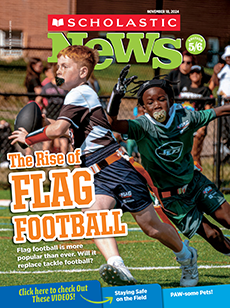1. Based on the article, why are many researchers focusing their attention on the moon’s south pole?
According to the article, researchers are focusing their attention on the moon’s south pole because it’s the planned landing spot for the return of astronauts to the moon. That could happen as soon as 2027.
R.1 Inference
2. How has scientists’ understanding of the moon’s dark spots changed over time?
Scientists used to believe that the dark spots on the moon were bodies of water. Now scientists know that these spots were caused by asteroid strikes more than 3 billion years ago. They filled with lava that rose from cracks in the moon’s crust and eventually hardened.
R.5 Comparison
3. How has the Lunar Reconnaissance Orbiter helped scientists learn about the moon?
The Lunar Reconnaissance Orbiter has shown that Vallis Schrödinger and Vallis Planck were created by an asteroid crash. This spacecraft has also been mapping the moon since 2009.
R.2 Main Idea and Key Details
